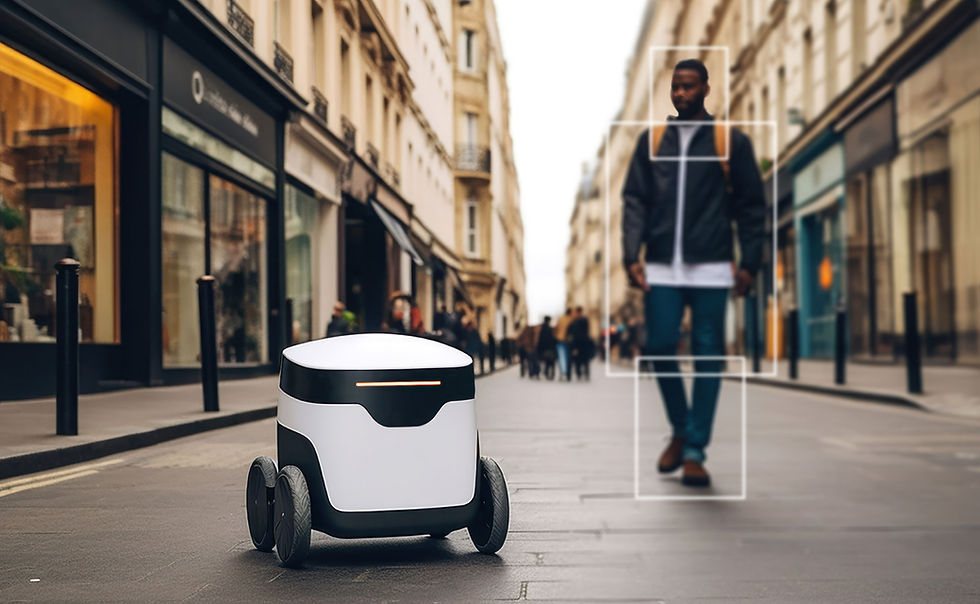Empowering Mobility: Generative AI and the Future of Fleet Management and Ride-Sharing
- Shreshth Virmani
- Aug 24, 2023
- 2 min read

In the rapidly evolving landscape of transportation, a new horizon is emerging—Generative Artificial Intelligence (AI) is revolutionizing the way we manage fleets and navigate the world of ride-sharing. This article embarks on an illuminating journey through the realm of fleet management and ride-sharing, unveiling how the fusion of cutting-edge technology and data-driven insights is reshaping the way we optimize operations, enhance user experiences, and maximize efficiency. From predictive maintenance to dynamic route optimization, Generative AI is shaping a future where mobility is seamless, responsive, and tailored to the needs of both passengers and providers.
Introduction: Generative AI's Influence on Fleet Management and Ride-Sharing
The world of transportation is undergoing a profound transformation. As the demand for efficient mobility solutions rises, the role of Generative AI in fleet management and ride-sharing becomes increasingly pivotal. Generative AI stands as a beacon of innovation, collaborating with fleet managers, service providers, and data analysts to reimagine the way vehicles are managed and shared. By harnessing predictive algorithms and real-time data, Generative AI is redefining the concept of seamless mobility.
Predictive Maintenance: Optimizing Fleet Operations
A cornerstone of Generative AI in fleet management lies in predictive maintenance. Traditionally, vehicles are maintained on fixed schedules, leading to inefficiencies and unplanned downtime. Generative AI analyzes real-time vehicle data, predicting when maintenance is needed based on usage patterns and wear. This proactive approach ensures that vehicles remain in optimal condition, minimizing breakdowns, and maximizing uptime.
Dynamic Route Optimization: Enhancing Efficiency
Efficiency in ride-sharing is elevated by AI optimization. Generative AI processes real-time traffic data, passenger requests, and vehicle locations to dynamically optimize routes. This not only reduces travel time but also enhances customer experiences by minimizing waiting periods.
Supply-Demand Balancing: Fulfilling User Needs
Balancing supply and demand is refined by AI precision. Generative AI analyzes historical demand patterns to predict peak hours and busy areas, allowing fleet managers to strategically deploy vehicles and meet user needs in real-time.
User Experience Enhancement: Tailoring the Ride
Generative AI transforms ride-sharing experiences. By analyzing user preferences, past behaviors, and traffic conditions, AI suggests music choices, climate settings, and even preferred routes, ensuring that every ride is tailored to individual preferences.
Technology Company's Role: Shaping Future Mobility
Technology companies play a pivotal role in this transformation. They collaborate with fleet operators to integrate Generative AI into management systems, enhancing predictive maintenance, route optimization, and user experiences. This partnership ensures that AI becomes a driving force in shaping the future of transportation.
Data-Driven Decision Making: Guiding Operational Excellence
Generative AI enhances decision-making processes. By analyzing vast amounts of data on vehicle performance, driver behavior, and user preferences, AI generates insights that guide strategic decisions, from fleet expansion to service improvements.
Ethical Considerations: Navigating AI's Impact
As Generative AI reshapes fleet management and ride-sharing, ethical considerations arise. Ensuring AI-generated decisions prioritize passenger safety, addressing concerns of data privacy and fairness in route allocation, and maintaining transparency in decision-making are crucial.
Conclusion: Redefining Mobility Dynamics
Generative AI's impact on fleet management and ride-sharing is akin to orchestrating a symphony of mobility. As predictive maintenance, dynamic route optimization, and supply-demand balancing converge, they nurture a future where vehicles are well-maintained, routes are efficiently navigated, and passenger experiences are elevated to new heights.




Comments